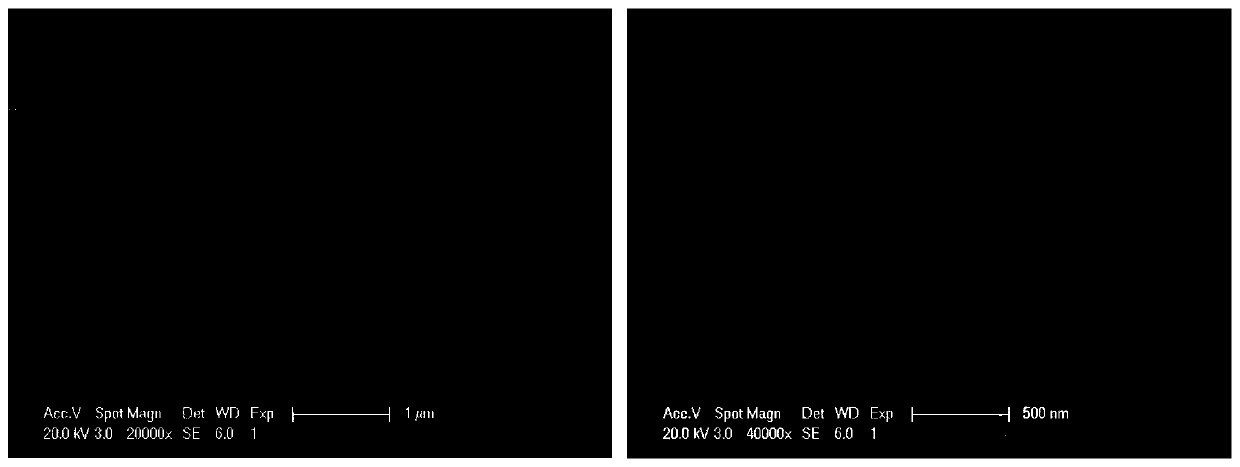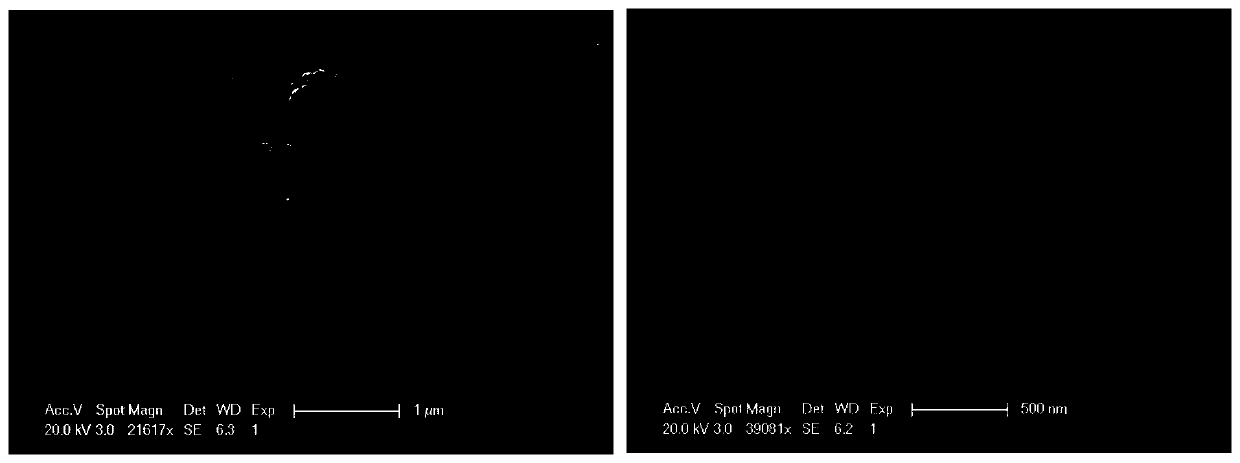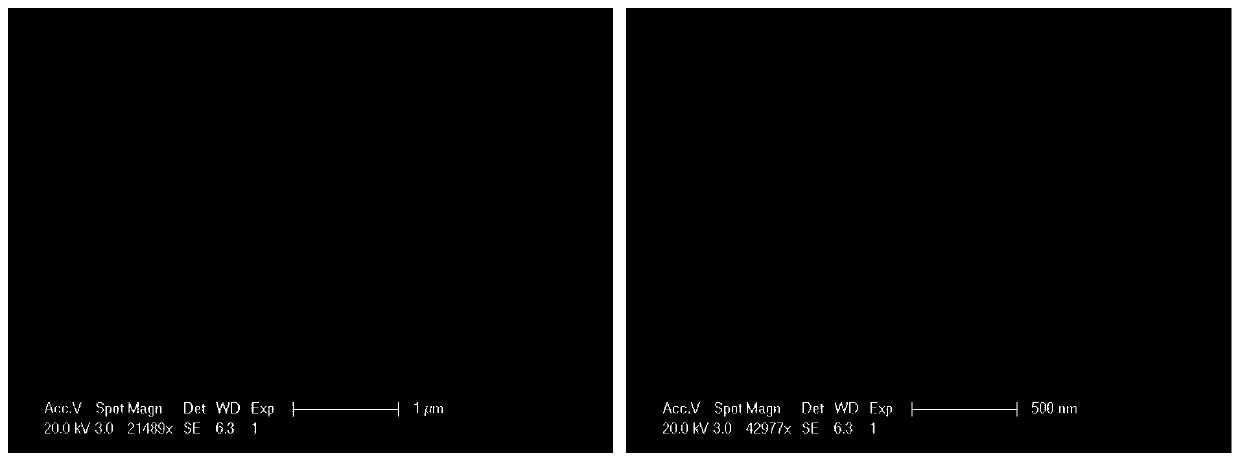Mercury removal adsorbent with core-shell structure, and preparation method thereof
A technology of core-shell structure and adsorbent, which is applied in the field of mercury removal adsorbent with core-shell structure and its preparation, can solve the problem that nanomaterials remove typical toxic pollution without significant efficiency, and achieve controllable shape and size , easy preparation, good catalytic and adsorption performance
- Summary
- Abstract
- Description
- Claims
- Application Information
AI Technical Summary
Problems solved by technology
Method used
Image
Examples
Embodiment 1
[0030] This embodiment provides a method for preparing a mercury removal adsorbent with a core-shell structure, and the specific steps are as follows:
[0031] Step 1: Add 1.35gFeCl 3 ·6H 2 O is dissolved in 40mL pure ethylene glycol solution (concentration> 99%), use a magnetic stirrer to stir for 30 minutes, add 3.6g anhydrous sodium acetate, 1.0g polyethylene glycol, and magnetically stir for 60-90 minutes at a speed of 5r / min; transfer the resulting solution to a 100ml water reactor at 200°C After the reaction is completed for 8 hours, the reaction is completed, cooled to room temperature, and washed repeatedly with absolute ethanol and deionized water for 3 to 5 times, and the washed Fe 3 O 4 The nanoparticles are put into an oven and dried at a temperature of 60℃ to obtain clean Fe 3 O 4 Nanoparticle
[0032] Step 2: Add 1.75g of ammonium molybdate tetrahydrate [(NH4) 6 Mo 7 O 24 ·4H 2 O], 3.8g of thiourea was added to 50mL of deionized water, and stirred with a magnetic sti...
Embodiment 2
[0036] The difference between this embodiment and embodiment 1 is that the hydrothermal reaction temperature in step 4 is 180° C., and the remaining steps are the same as those in embodiment 1, and finally, mercury removal adsorbent 2 is obtained.
Embodiment 3
[0038] The difference between this embodiment and embodiment 1 is that the hydrothermal reaction temperature in step 4 is 200° C., and the remaining steps are the same as those in embodiment 1, and finally, mercury removal adsorbent 3 is obtained.
[0039] Such as figure 1 , 2 , 3 shows that as the synthesis temperature increases, Fe 3 O 4 Nanoparticles are coated with more MoS 2 Nanosheet, MoS 2 The crystallinity and degree of order of the nanosheets also increase.
[0040] Such as Figure 4 , 5 、6, for the simulated power plant flue gas (120℃) environment, and N 2 As a carrier gas, the mercury removal rate of mercury removal adsorbent 1 and mercury removal adsorbent 2 can almost reach 100% within 50 minutes, and the mercury removal rate of mercury removal adsorbent 3 is between 98%-100%, and they are all very stable. The mercury removal rate of molybdenum disulfide produced by the process generally only reaches about 80%, indicating that the mercury removal effect of the present ...
PUM
 Login to View More
Login to View More Abstract
Description
Claims
Application Information
 Login to View More
Login to View More - R&D
- Intellectual Property
- Life Sciences
- Materials
- Tech Scout
- Unparalleled Data Quality
- Higher Quality Content
- 60% Fewer Hallucinations
Browse by: Latest US Patents, China's latest patents, Technical Efficacy Thesaurus, Application Domain, Technology Topic, Popular Technical Reports.
© 2025 PatSnap. All rights reserved.Legal|Privacy policy|Modern Slavery Act Transparency Statement|Sitemap|About US| Contact US: help@patsnap.com



